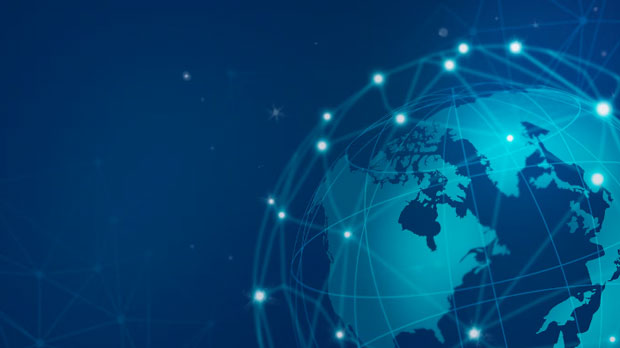Playwright, a robust automation framework designed for browser testing, has demonstrated strong performance when employed in proxy environments. By effectively managing network requests, handling latency issues, and navigating different proxy configurations, Playwright ensures smooth automation and testing workflows. It supports multiple browsers such as Chromium, Firefox, and WebKit, making it versatile across a variety of use cases. However, when operating in a proxy setup, performance can fluctuate depending on the configuration of the proxy and network conditions. Introduction to Playwright and Proxy EnvironmentsPlaywright is a powerful and versatile automation tool primarily used for browser testing, enabling users to interact with web pages in real time, just like real users. Proxy environments, on the other hand, are frequently used in testing scenarios to simulate network conditions, control traffic routing, and maintain privacy or security. When Playwright is deployed in such an environment, the framework's ability to manage different proxies and network conditions becomes crucial to achieving consistent, reliable test results.By analyzing Playwright's performance in proxy environments, users can better understand its potential for handling latency, throttling, and traffic management. The ability to configure proxies within Playwright is straightforward, but the impact of proxy configurations on performance and testing accuracy requires further exploration. This article provides a deep dive into this area, offering insights that will benefit both novice and experienced users.Setting Up Playwright in Proxy EnvironmentsBefore diving into performance analysis, it’s important to understand the basic setup of Playwright in a proxy environment. Playwright allows users to configure proxies for the browser instances it controls, which is a critical aspect when performing tests that require a simulated network environment.The process of configuring a proxy is simple yet powerful. Playwright provides methods to specify proxy settings at the browser context level. Users can define the proxy address and authentication credentials, enabling them to route network traffic through a designated proxy server. This setup ensures that the browser traffic is simulated under real-world network conditions, making the testing environment more realistic.In addition to basic proxy configurations, Playwright supports advanced setups, such as rotating proxies, which are especially useful for testing scenarios requiring anonymity or simulating multiple user locations. This flexibility offers a high level of control over the network conditions, crucial for comprehensive testing.Performance Factors in Proxy EnvironmentsSeveral performance factors influence Playwright’s efficiency in a proxy setup. Understanding these factors is essential for optimizing automation scripts and achieving accurate testing outcomes.1. Latency and Network Conditions Latency is one of the most significant performance factors when using Playwright in proxy environments. Network latency can vary depending on the proxy server's geographical location and the number of hops the traffic needs to go through. The higher the latency, the slower the interaction with the web page, which may lead to extended test times. Playwright's ability to handle these delays depends on its internal handling of timeouts and retries. Optimizing timeouts to handle longer delays or implementing retries for failed requests can help mitigate latency issues.2. Throughput and Bandwidth The bandwidth of the proxy server also plays a crucial role in determining how fast Playwright can interact with the web pages. If the proxy server has limited throughput, Playwright will face delays in loading resources, which could skew test results. To ensure that Playwright performs optimally, users should configure their proxies to handle higher bandwidth, especially in tests that involve large resources like media files or APIs that require extensive data exchange.3. Proxy Configuration Complexity The complexity of the proxy configuration can also affect Playwright’s performance. Simple proxies with minimal security or routing rules are usually faster, while more complex setups involving multiple proxy layers, authentication methods, or rotating proxies might introduce additional delays. It’s essential to test Playwright with different proxy configurations to identify the optimal setup for specific use cases. For example, rotating proxies can introduce additional overhead, but they are often necessary for testing in specific conditions, such as simulating traffic from multiple geographical locations.4. Error Handling and Reliability Network errors and connection drops can occur when using proxies, which may disrupt the testing flow. Playwright’s robust error handling capabilities, such as automatic retries and handling specific error codes, are critical for ensuring consistent results. However, if the proxy server frequently disconnects or introduces connection issues, these errors may not always be handled gracefully, affecting the accuracy and reliability of tests.Challenges and Limitations of Playwright in Proxy EnvironmentsWhile Playwright excels in many scenarios, there are certain challenges and limitations when used in proxy environments.1. Compatibility with Certain Proxy Servers Although Playwright supports a wide variety of proxies, some configurations, especially those using less common or proprietary protocols, may not be fully compatible. In such cases, users may need to resort to workarounds or choose alternative proxy types. Additionally, if the proxy server imposes strict security measures or advanced authentication, it could introduce complexities in handling requests through Playwright.2. Testing Accuracy and Consistency The dynamic nature of proxy environments can lead to inconsistencies in testing. For example, a proxy server may route traffic differently at different times, especially if it uses load balancing or fails to maintain persistent sessions. This can cause test results to fluctuate, as the network conditions may change between test executions. To counter this, Playwright users should incorporate techniques to stabilize proxy connections and account for fluctuations in their tests.3. Impact on Test Execution Time One of the most significant drawbacks of using Playwright in proxy environments is the potential increase in test execution time. Proxies, especially those with high latency or limited bandwidth, can slow down the browser’s response time, affecting the overall test duration. This is particularly noticeable in large-scale test suites where multiple test cases need to be executed in parallel. Optimizing the proxy server’s performance and adjusting test scripts to handle proxy-related delays can help alleviate this issue.Best Practices for Optimizing Playwright Performance in Proxy EnvironmentsTo ensure optimal performance when using Playwright in proxy environments, users should consider the following best practices:1. Use Low-Latency Proxies When possible, choose proxy servers with low latency to minimize delays in network requests. Proxies located closer to the test server or end-user locations will help reduce the round-trip time for requests and improve the overall test speed.2. Optimize Proxy Settings Fine-tuning proxy settings, such as adjusting timeout values and using persistent connections, can help mitigate some of the issues introduced by proxies. Additionally, monitoring proxy server performance and ensuring it can handle the desired load is essential for maintaining consistent results.3. Leverage Parallel Test Execution Playwright allows for parallel execution of tests, which can help speed up testing in proxy environments. By distributing test cases across multiple browsers or proxy instances, users can reduce the total execution time and increase testing efficiency.4. Monitor and Manage Proxy Errors Playwright's error handling mechanisms should be used effectively to ensure smooth execution. Implementing retry strategies, logging proxy errors, and analyzing patterns of failure can help troubleshoot performance issues and prevent disruptions in the testing flow.ConclusionPlaywright’s performance in proxy environments is a crucial consideration for users involved in browser automation and testing. While it provides flexibility and control over proxy configurations, network latency, bandwidth, and proxy complexity can impact performance. By understanding the various performance factors, users can optimize their proxy setups to achieve more reliable and efficient testing. Although challenges exist, with the right configuration and error handling strategies, Playwright remains a powerful tool for browser automation in proxy environments.
Jun 27, 2025
![arrow]()



















































